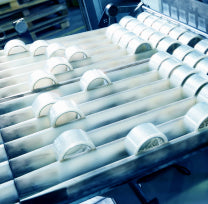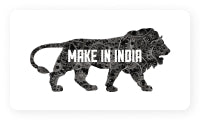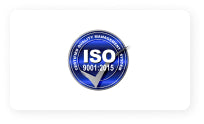by Packsmith
21 Aug 2024
Plastics are ubiquitous in our modern world, used in everything from food packaging to electronics. However, not all plastics are created equal. There are different types of plastics, each with unique properties and characteristics. In this blog, we will explore the different types of plastics and their uses.
1. Polyethylene (PE)
Polyethylene (PE) is a thermoplastic polymer that is widely used in various industries for its versatility, durability, and cost-effectiveness. PE is a lightweight material that can be moulded into various shapes and sizes, making it ideal for a range of applications.
Properties of PE Plastic
PE is a type of plastic that is made from ethylene, a compound derived from natural gas and petroleum. There are three types of PE plastics: Low-Density Polyethylene (LDPE), Linear Low-Density Polyethylene (LLDPE), and High-Density Polyethylene (HDPE). Each type has its unique properties and characteristics.PE plastic has several unique properties that make it ideal for various applications, including:
Durability and strength: PE plastic is a highly durable and strong material that can withstand high stress and impact.
Chemical resistance: PE plastic is resistant to many chemicals, including acids, bases, and solvents.
Moisture resistance: PE plastic is highly resistant to moisture and is suitable for applications that require waterproofing.
Flexibility: PE plastic is a flexible material that can be easily moulded into various shapes and sizes.
Applications of PE Plastic
Packaging: PE plastic is commonly used for packaging products, such as food, beverages, and consumer goods. LDPE and LLDPE are used for plastic bags, shrink wrap, and stretch film, while HDPE is used for bottles, caps, and closures.
Construction: PE plastic is used in construction for various applications, such as pipes, wire insulation, and roofing. HDPE pipes are widely used for water and gas distribution systems due to their durability and resistance to corrosion.
Agriculture: PE plastic is used in agriculture for irrigation systems, greenhouse covers, and mulch film. LDPE is commonly used for drip irrigation tubing, while LLDPE is used for greenhouse covers and mulch film.
Medical: PE plastic is used in medical applications for products such as syringes, medical tubing, and surgical gloves. LDPE and HDPE are used for medical tubing, while LLDPE is used for surgical gloves.
Automotive: PE plastic is used in the automotive industry for various applications, such as fuel tanks, bumpers, and door panels. HDPE is commonly used for fuel tanks due to its high resistance to chemicals and impact.
2. Polypropylene(PP)
Polypropylene, commonly known as PP plastic, is a thermoplastic polymer that has gained popularity in recent years due to its excellent properties and versatile applications. It is a lightweight and durable plastic that is resistant to many chemicals and heat.
Properties of PP Plastic
PP plastic is made from propylene, a hydrocarbon obtained from the refining of crude oil and natural gas. It is a thermoplastic polymer that can be molded into various shapes and sizes using various processing techniques. PP plastic has several unique properties that make it ideal for various applications, including:
Durability and strength: PP plastic is a highly durable and strong material that can withstand high stress and impact.
Chemical resistance: PP plastic is resistant to many chemicals, including acids, bases, and solvents.
Heat resistance: PP plastic can withstand high temperatures without melting or deforming, making it suitable for high-temperature applications.
Lightweight: PP plastic is a lightweight material that is easy to transport and handle
Applications of PP Plastic
Packaging: PP plastic is widely used for packaging applications, including food packaging, cosmetics, and pharmaceuticals. It is commonly used for plastic bags, food containers, and caps and closures.
Automotive: PP plastic is used in the automotive industry for various applications, such as car bumpers, dashboards, and interior trims. PP plastic is preferred for automotive applications due to its excellent impact resistance and ability to withstand extreme temperatures.
Medical: PP plastic is used in the medical industry for applications such as surgical masks, syringes, and medical containers. PP plastic is preferred for medical applications due to its excellent chemical resistance and ability to withstand high temperatures.
Textiles: PP plastic is used in the textile industry for applications such as ropes, carpets, and geotextiles. PP plastic is preferred for textile applications due to its excellent strength, durability, and resistance to moisture.
Electrical: PP plastic is used in the electrical industry for applications such as cable insulation, capacitors, and electronic components. PP plastic is preferred for electrical applications due to its excellent electrical insulation properties.
3. Polyvinyl chloride(PVC)
PVC (Polyvinyl chloride) is a popular thermoplastic polymer that has many versatile applications due to its unique properties. PVC plastic is made from the polymerization of vinyl chloride monomer, and it is one of the most widely used plastics in the world.
Properties of PVC Plastic
PVC plastic is a rigid, durable, and strong plastic that can be easily molded into different shapes and sizes using various processing techniques. Some of the unique properties of PVC plastic include:
Chemical resistance: PVC plastic is resistant to many chemicals, including acids and bases.
Durability and strength: PVC plastic is a durable and strong material that can withstand impact and stress.
Flame resistance: PVC plastic is a flame-retardant material that can withstand high temperatures.
Electrical insulation: PVC plastic has excellent electrical insulation properties.
Applications of PVC Plastic
Construction: PVC plastic is used extensively in the construction industry for applications such as pipes, fittings, window frames, and flooring. PVC pipes are popular due to their low cost, lightweight, and excellent durability.
Packaging: PVC plastic is used in the packaging industry for applications such as blister packs, clamshells, and clear plastic containers. PVC plastic packaging is preferred due to its excellent clarity and toughness.
Automotive: PVC plastic is used in the automotive industry for applications such as dashboard components, door panels, and seat covers. PVC plastic is preferred for automotive applications due to its excellent durability and resistance to heat and cold.
Electrical: PVC plastic is used in the electrical industry for applications such as cable insulation, electrical conduit, and switch boxes. PVC plastic is preferred for electrical applications due to its excellent electrical insulation properties and low cost.
Medical: PVC plastic is used in the medical industry for applications such as blood bags, tubing, and catheters. PVC plastic is preferred for medical applications due to its excellent biocompatibility and ease of sterilisation.
4. Acrylonitrile Butadiene Styrene(ABS)
ABS (Acrylonitrile Butadiene Styrene) is a thermoplastic polymer that is widely used in various industries due to its unique properties. It is a durable, tough, and versatile plastic that can be moulded into different shapes and sizes using various processing techniques.
Properties of ABS Plastic
ABS plastic is a tough and rigid plastic that has a unique combination of properties that make it suitable for a variety of applications. Some of the unique properties of ABS plastic include:
High impact resistance: ABS plastic has excellent impact resistance and can withstand high levels of stress and impact.
Chemical resistance: ABS plastic is resistant to many chemicals, including acids and bases.
High strength: ABS plastic is a strong and durable material that can withstand high levels of stress.
Good dimensional stability: ABS plastic has good dimensional stability, which means it maintains its shape and size even in harsh environments.
Applications of ABS Plastic
Automotive: ABS plastic is widely used in the automotive industry for applications such as car interiors, trims, and body parts. It is preferred for automotive applications due to its high impact resistance, dimensional stability, and excellent surface finish.
Consumer goods: ABS plastic is used in various consumer goods, including toys, electronic housing, and luggage. It is preferred for these applications due to its durability, toughness, and ease of processing.
Medical: ABS plastic is used in the medical industry for applications such as medical equipment and devices. It is preferred for medical applications due to its good biocompatibility, which means it does not react with biological tissues.
Electronics: ABS plastic is used in the electronics industry for applications such as computer housings, printer parts, and keyboards. It is preferred for electronics applications due to its good dimensional stability, excellent surface finish, and resistance to high temperatures.
Construction: ABS plastic is used in the construction industry for applications such as pipe fittings, shower stalls, and wall panels. It is preferred for construction applications due to its good chemical resistance, durability, and ease of processing.
5. Polyethylene Terephthalate(PET):
PET (Polyethylene Terephthalate) is a commonly used thermoplastic polymer that is widely known for its unique properties. It is a durable, transparent, and versatile plastic that can be moulded into various shapes and sizes using different processing techniques.
Properties of PET Plastic
PET plastic is a strong and durable material that has several unique properties. Some of the unique properties of PET plastic include:
High tensile strength: PET plastic has high tensile strength, making it strong and durable.
Good chemical resistance: PET plastic is resistant to many chemicals, including acids and bases.
Transparent: PET plastic is transparent and has excellent clarity, making it ideal for packaging applications.
Lightweight: PET plastic is lightweight, making it easy to handle and transport.
Applications of PET Plastic
Packaging: PET plastic is widely used in the packaging industry for applications such as bottles, jars, and containers. It is preferred for packaging applications due to its excellent clarity, lightweight, and good barrier properties, which help to protect the contents from moisture, oxygen, and other contaminants.
Textiles: PET plastic is used in the textile industry for applications such as fibers, fabrics, and clothing. It is preferred for textile applications due to its high tensile strength, durability, and resistance to shrinkage.
Electronics: PET plastic is used in the electronics industry for applications such as electrical insulation and components. It is preferred for electronics applications due to its good electrical insulation properties, dimensional stability, and resistance to high temperatures.
Automotive: PET plastic is used in the automotive industry for applications such as seat belts, airbags, and dashboard components. It is preferred for automotive applications due to its high strength, durability, and resistance to impact.
Medical: PET plastic is used in the medical industry for applications such as medical devices and equipment. It is preferred for medical applications due to its good biocompatibility, which means it does not react with biological tissues.
Conclusion:
It is important to note that not all plastics are recyclable. PET, HDPE, PP, and LDPE are commonly recyclable, while PVC and PS are not widely recycled due to their composition and properties.
Understanding the different types of plastics can help us make informed choices when it comes to using and disposing of plastic products. While plastics have many benefits, such as durability and convenience, they also have negative impacts on the environment, such as pollution and waste. By choosing recyclable plastics and reducing our use of single-use plastics, we can help to minimize the environmental impact of plastics and promote sustainability.















